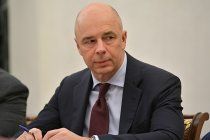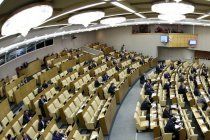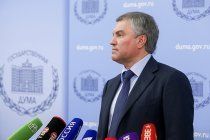 Русский
Русский English
English-







Three readings during 60 days
This term is for consideration and adoption in three readings of the draft federal budget for 2020–2022 by the State Duma of the Russian Federation. Russian lawmakers will pay particular attention to the efficiency of spending the budget ruble.
According to the Chairman of the State Duma Vyacheslav Volodin, this is improving the efficiency of budget spending, reducing the difference in budgetary provision of the regions between the most well-off and low-income, supporting investment programs in the regions through public-private partnerships and increasing funding for the sustainable rural development program.
The draft federal budget 2020–2022 was submitted to the State Duma on September 30. The document allows investing in the real sector funds from the National Wealth Fund. Next year, the Fund will exceed the bar of seven percent of GDP. This will allow the Government, guided by the letter of the law, to channel the "surplus" into the largest and most high-tech infrastructure projects, of course, on a repayable basis with corresponding interest for use.
After being submitted to the State Duma on September 30, the draft budget will be forwarded to the chamber committees for comments and suggestions within three days, to the Federation Council and to the Audit Chamber to prepare a conclusion. According to the law, the State Duma considers the document for 60 days in three readings. Thus, the budget 2020–2022 should be adopted before December 1, 2019.
The main difference between the budget of the next three-year period from the previous ones should be a more efficient distribution of budget funds in the regions. State Duma deputies intend to ensure that money is sent to federal subjects for the implementation of national projects not in the second half of the year, but in the first quarter. To do this, all ministries and departments should prepare all the necessary by-laws by the end of this year.
Social sphere
Chairman of the Government Dmitry Medvedev explained that the budget will be not just balanced, but surplus for all three years, while the inflation rate should not exceed 4 percent.
In 2020, three-quarters of the additional costs will form social policy, health care and education. For example, federal budget expenditures on health care will grow by more than 50 percent, on science - by 33 percent, on environmental protection - by 60 percent. About 2.7 trillion rubles will be allocated for the national projects "Demography" and "Health Care" in 2020–2022. Financing of the national project "Education" will amount to about 380 billion rubles.
In general, the draft budget provides for the allocation of about seven trillion rubles over the next three years for the implementation of national projects and a comprehensive plan for the modernization and expansion of the main infrastructure.
In addition, the budget of the next three-year period involves the allocation of more than 1.6 trillion rubles to create a modern, comfortable and safe infrastructure. The planned amount of maternity capital in 2020 will exceed 466 thousand rubles. For these purposes, the budget includes 316 billion rubles. Next year, the Cabinet of Ministers also plans to increase funding for state extra-budgetary funds and the Social Insurance Fund.
Oil and NWF
Budget revenues next year will exceed 20 trillion rubles, including due to softening the budget rule: cut-off price per barrel of oil, above which all treasury revenues fall into the National Wealth Fund (NWF), from the current 41.6 dollars increases next year to 42.4 dollars. That is, with each barrel of hydrocarbon raw materials sold abroad, it will “drip” into the treasury by $ 0.8 more than now.
At the same time, the NWF will not have less money, on the contrary, next year the seven percent of GDP threshold will be overcome, which will allow the Cabinet to invest “surpluses” in the implementation of large infrastructure projects. Minister of Finance Anton Siluanov, said that all investments from the reserve will be carried out only on a repayable and maximally paid basis. In his opinion, NWF funds should be directed only to those projects that will give a synergistic effect and a multiple increase in private investment.
Inflation and GDP
According to expert economist Vladimir Gribov, the inflation rate below four percent, which is provided for by the draft budget 2020–2022, is positive from the point of view of classical economic theory. At the same time, the expert clarified that, on the one hand, measures to limit inflation affect the growth of the Russian economy, and on the other hand, they allow the state to fulfill all its social obligations.
The first deputy chairman of the State Duma Committee on Budget and Taxes Irina Guseva noted the realism of the declared budget parameters.
The first deputy chairman of the Committee of the Council of the Federation on the budget and the financial markets Sergei Ryabukhin in the submitted draft budget noted a steady increase in GDP.
As the Chairman of the State Duma Vyacheslav Volodin noted, the next budget cycle should begin on January 1, 2020, and not in July or August. This would make it possible to complete all the most important contracts for major infrastructure and transport projects.
This will happen when all by-laws of the ministry and departments will be prepared before the end of this year after the adoption of the budget law, respectively, and agreements with the regions should be concluded not in February, but before the New Year holidays.
It is equally important, according to Vyacheslav Volodin, to gradually overcome the difference in budgetary provision between the regions. He recalled that now the gap is sevenfold, but due to measures taken by the Ministry of Finance, it has halved.




